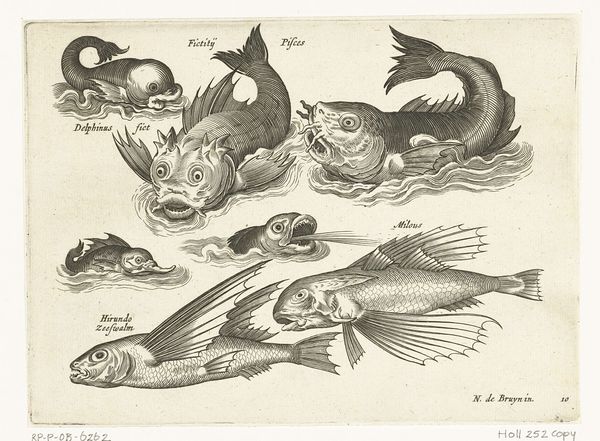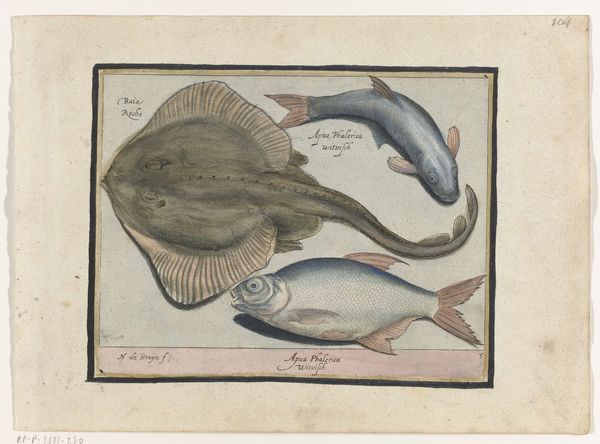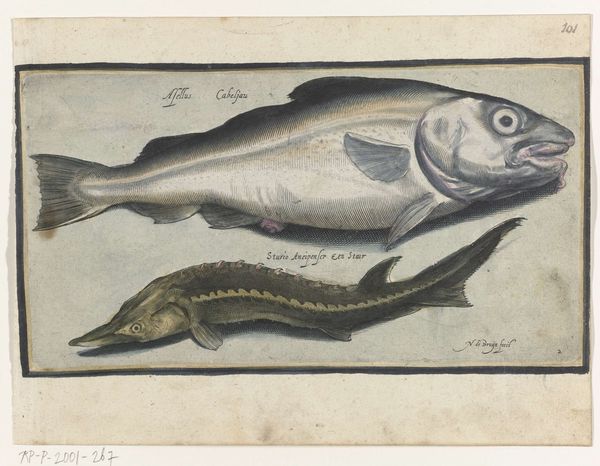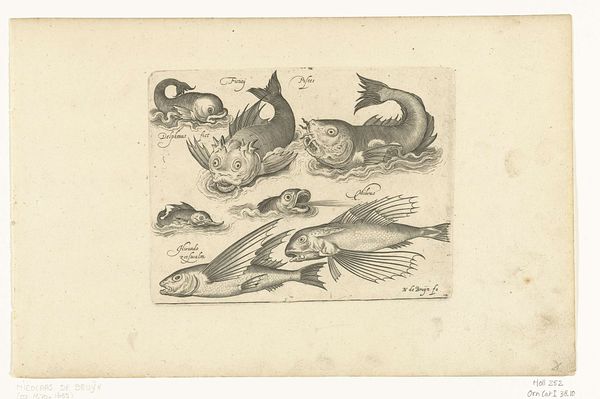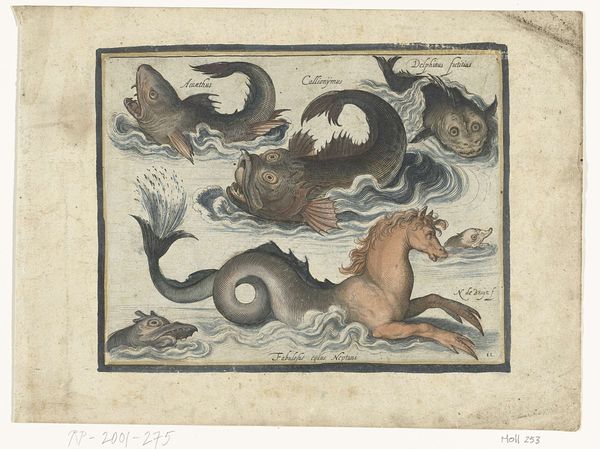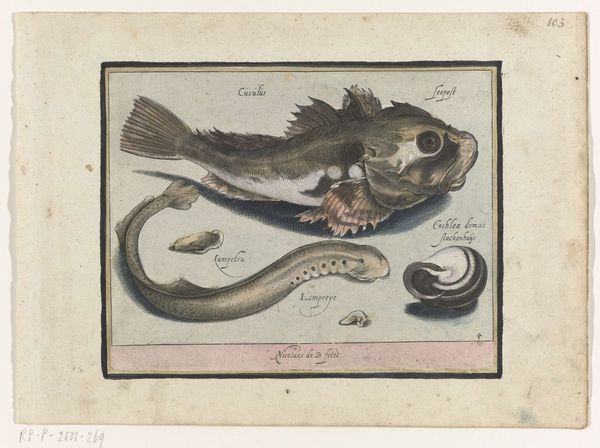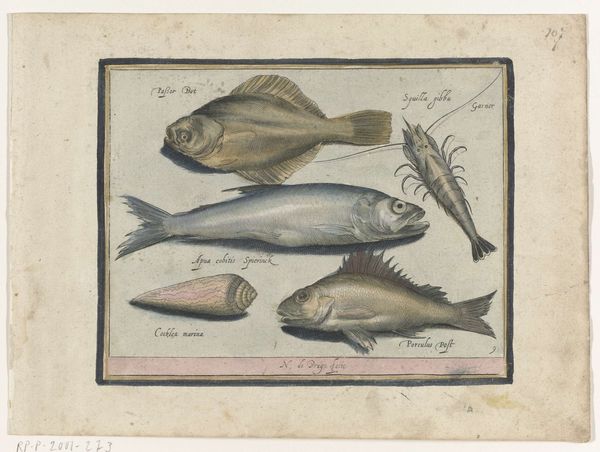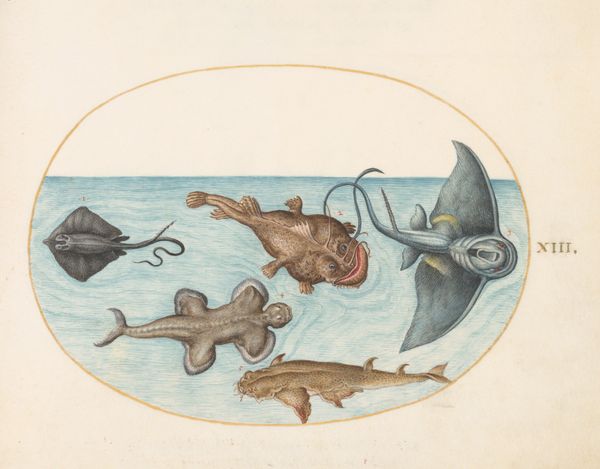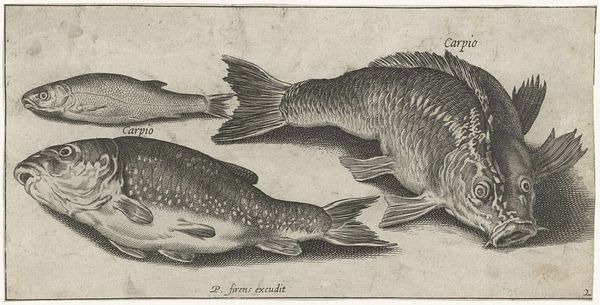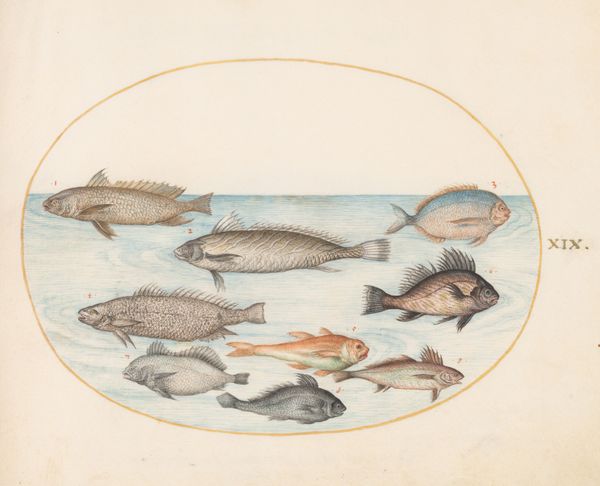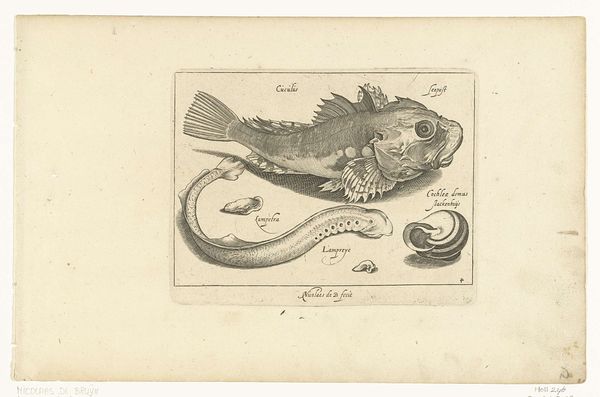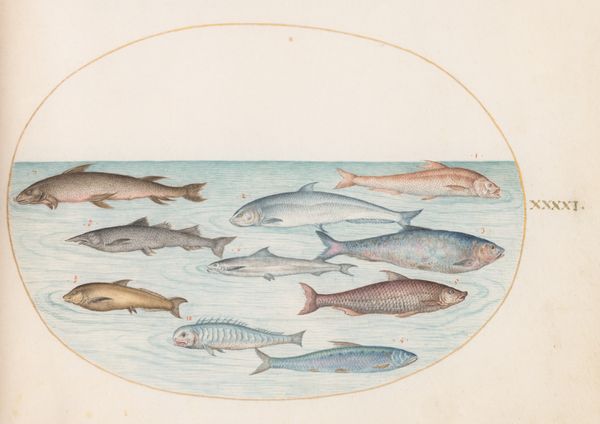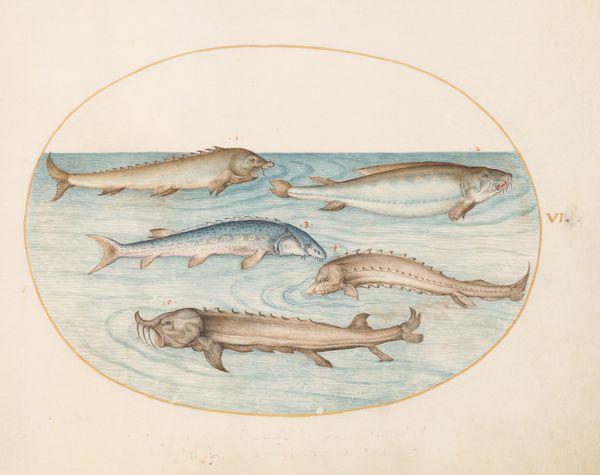
Fantastische waterdieren, onder andere dolfijn en pitvis 1581 - 1656
0:00
0:00
drawing, coloured-pencil, paper, ink
#
drawing
#
coloured-pencil
#
animal
#
caricature
#
figuration
#
paper
#
11_renaissance
#
ink
#
coloured pencil
Dimensions: height 129 mm, width 165 mm
Copyright: Rijks Museum: Open Domain
Editor: We're looking at "Fantastic Water Animals, including Dolphin and Pipefish," a drawing in colored pencil and ink on paper made by Nicolaes de Bruyn between 1581 and 1656. The fish are so expressive, almost human in their exaggerated features. What can you tell me about its place in art history? Curator: This piece speaks volumes about the relationship between scientific inquiry and artistic expression during the Renaissance. Consider the socio-political context: Europe was in an age of exploration, encountering new flora and fauna. These discoveries fueled not just scientific curiosity but also the public imagination, which often led to distorted representations in art. Editor: Distorted? You mean like these somewhat monstrous, comical faces on the fish? Curator: Precisely! Think about the function of imagery. Were these drawings meant to be accurate depictions for scientific study, or were they intended to entertain or even to satirize? The very act of giving these fish human-like features tells us about the prevalent anthropocentric view, positioning humanity as the measure of all things. Does this make you wonder about the knowledge or beliefs of the intended audience? Editor: It does! So it’s less about capturing the fish as they are, and more about reflecting a specific worldview. Were there other artists doing similar work? Curator: Absolutely. There was a whole genre of "monster" illustrations, often displayed in cabinets of curiosities – early museums intended to shock and educate. The circulation of such imagery further normalized these interpretations and shaped public perceptions of the natural world. This reinforces how museums contribute to establishing and disseminating ideas. Editor: That makes so much sense! I had focused on the humor, but I see now it's deeply embedded in its time and how knowledge was presented. Curator: And that's why understanding the historical context transforms our viewing experience! It encourages a critical eye toward not just art but the power structures at play.
Comments
No comments
Be the first to comment and join the conversation on the ultimate creative platform.
